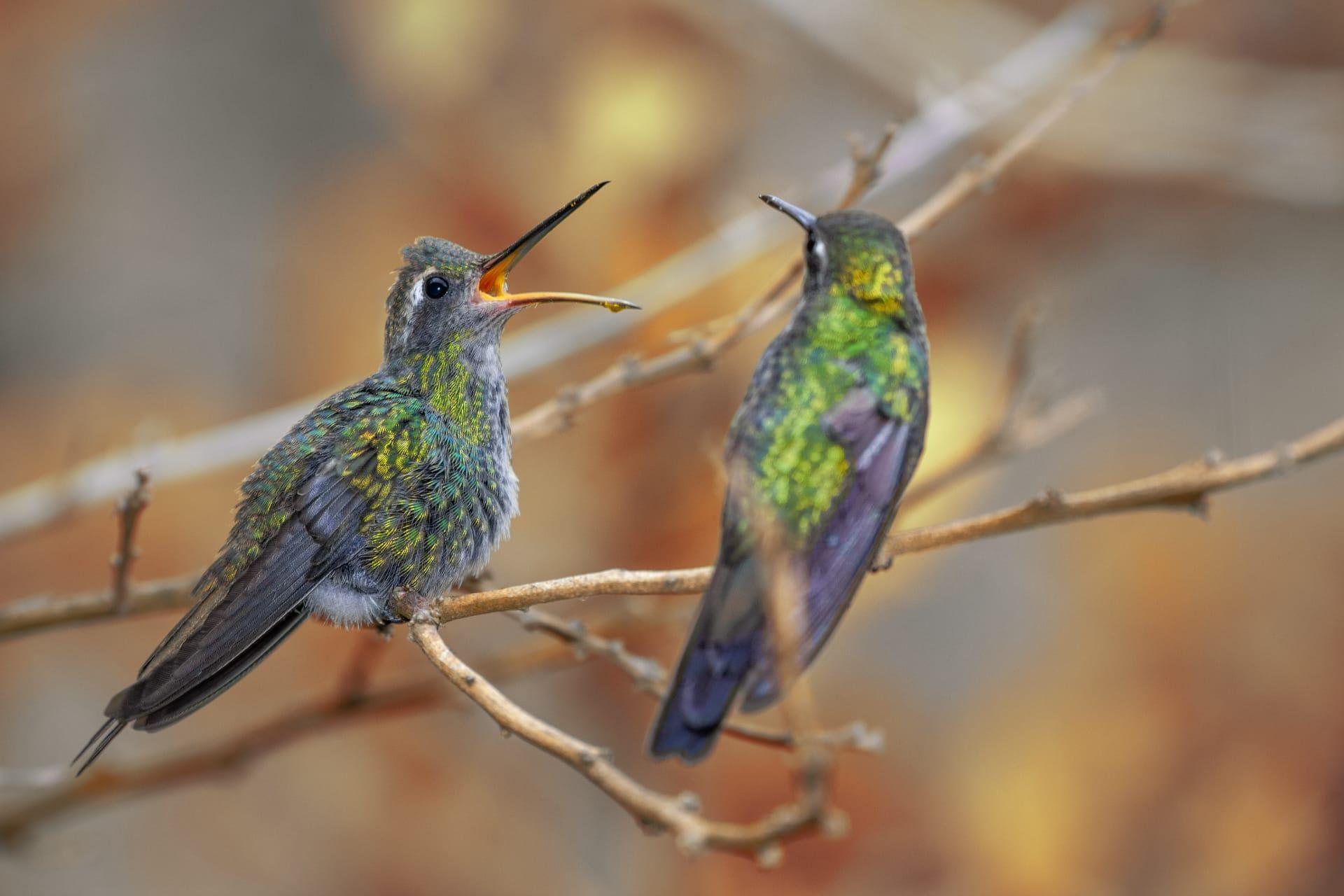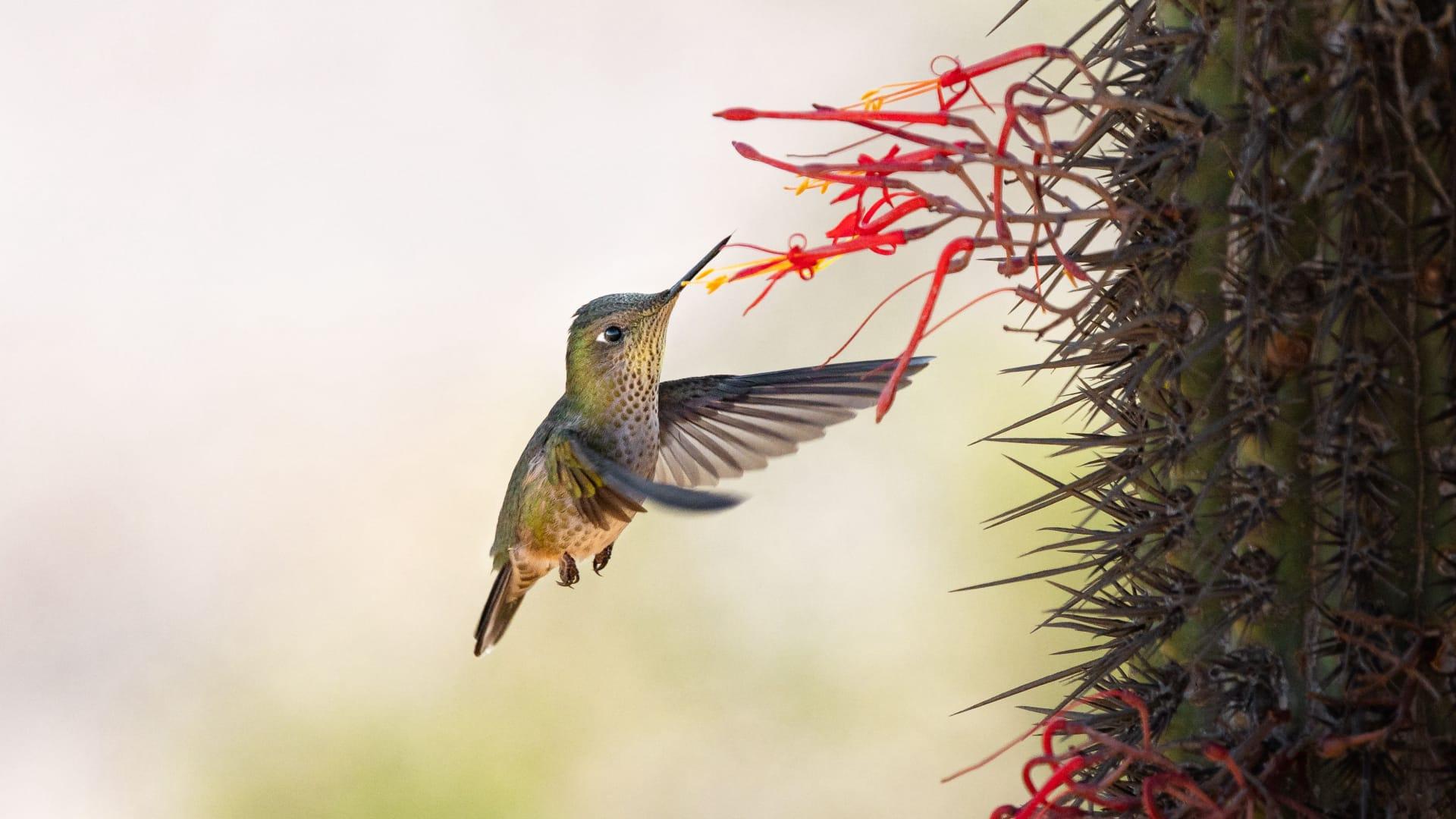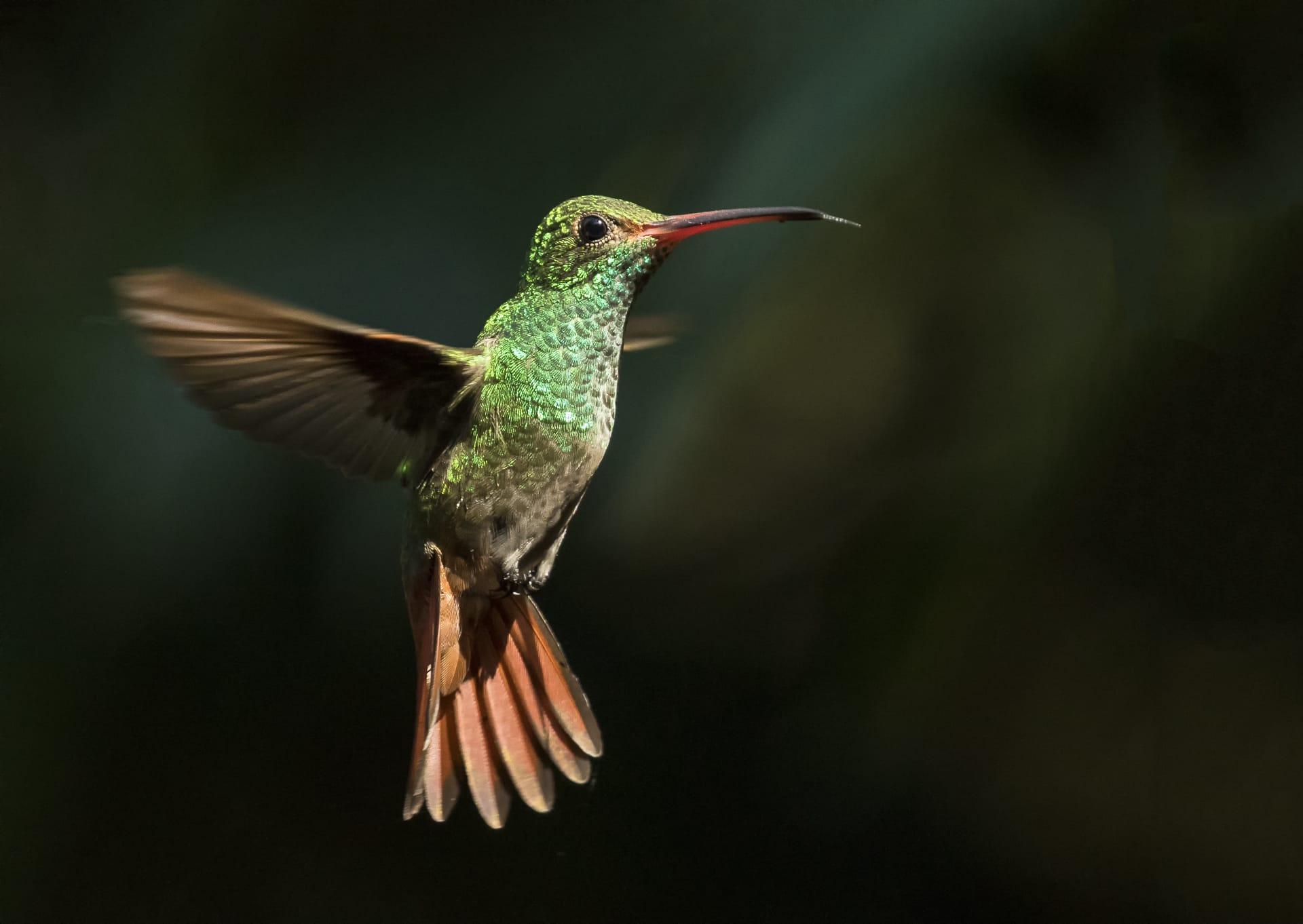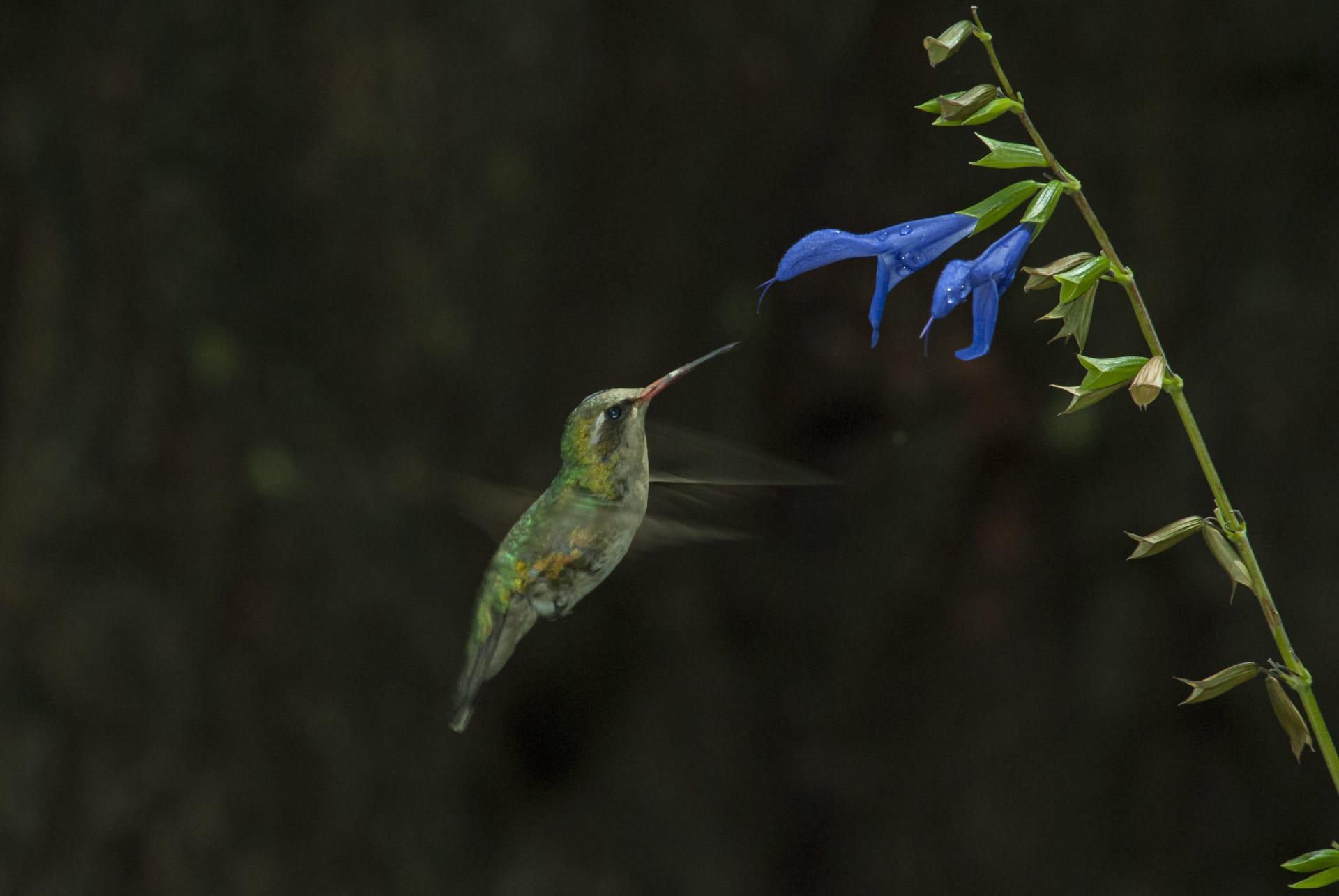Hummingbird Characteristics
- Home /
- Mini Encyclopedia /
- Animal /
- Hummingbird Characteristics
1
Hummingbirds are fascinating creatures, known for their vibrant colors and incredible agility. These tiny birds typically measure between 3 to 5 inches in length, making them one of the smallest bird species. Despite their diminutive size, hummingbirds have a relatively long lifespan, with some species living up to 10 years in the wild. Their compact, streamlined bodies are perfectly adapted for rapid flight, with a weight range usually between 2 to 20 grams.
One of the most remarkable organs of a hummingbird is its highly specialized heart. This tiny powerhouse can beat up to 1,200 times per minute during flight and around 250 times per minute at rest. The hummingbird's heart constitutes about 2.5% of its total body weight, a proportion much higher than most other birds or mammals. This allows them to sustain their high-energy lifestyle, which includes hovering and rapid, agile flight maneuvers to feed on nectar.

2
Question: Why do hummingbirds hover?
Answer: Hummingbirds are renowned for their unique ability to hover in mid-air. This is made possible by their incredible wing structure and rapid wing beats, flapping at an astonishing rate of about 50 times per second. This rapid movement creates enough lift to hold their tiny bodies aloft. The hovering ability of hummingbirds is not just a fascinating sight but also serves a practical purpose. It allows them to feed on nectar from flowers while remaining airborne, a vital adaptation for accessing food sources while minimizing the risk of predation.

3
Hummingbirds possess extraordinary flight capabilities that set them apart from other bird species. Their wings are unique in that they rotate at the shoulder, allowing the bird to move in any direction - forward, backward, up, down, sideways, and even upside down. This high degree of maneuverability is crucial for navigating through dense foliage and for intricate courtship displays. Furthermore, hummingbirds can reach impressive speeds, with some species clocking flight speeds of up to 34 mph.
When it comes to feeding, hummingbirds primarily consume nectar from flowers, which provides them with the high energy required for their fast-paced lifestyle. Their long, slender beaks and specialized tongues are perfectly adapted for extracting nectar. In addition to nectar, they also consume insects and spiders, providing them with essential proteins. This mixed diet is critical for their nutrition, especially during breeding season and for feeding their young.

4
Hummingbirds are primarily found in the Americas, with their habitat ranging from Alaska to Tierra del Fuego. These adaptable birds inhabit diverse environments, including tropical rainforests, mountainous regions, and even arid deserts. Their ability to thrive in various climates is a testament to their resilience and adaptability. However, they are most abundant in tropical areas, where the diversity of flowering plants provides ample food sources.
Reproduction is another fascinating aspect of hummingbird life. Most species are solitary and only come together for mating. The male hummingbird performs elaborate aerial displays to attract a mate. After mating, the female takes on the responsibility of building a tiny cup-shaped nest, often using spider silk and plant down, to lay her eggs, typically two in number. She solely incubates the eggs and cares for the young, demonstrating a high level of maternal investment despite their solitary nature.

5
Book: "The Hummingbird Book: The Complete Guide to Attracting, Identifying, and Enjoying Hummingbirds" by Donald Stokes and Lillian Stokes. Published in the United States in 1989, this book is a comprehensive guide for hummingbird enthusiasts. It covers various aspects of hummingbird life, including identification, behavior, and how to attract them to your garden. The Stokes' detailed and accessible writing makes it a favorite among bird watchers.
Book: "Hummingbirds: A Life-size Guide to Every Species" by Michael Fogden, Marianne Taylor, and Sheri L. Williamson. This book, published in the United Kingdom in 2014, presents an exhaustive overview of all known hummingbird species. The authors, renowned for their expertise on hummingbirds, provide detailed descriptions, photographs, and range maps for each species. The life-size photographs of the birds add a unique and engaging element to the book, making it a valuable resource for both ornithologists and nature lovers.